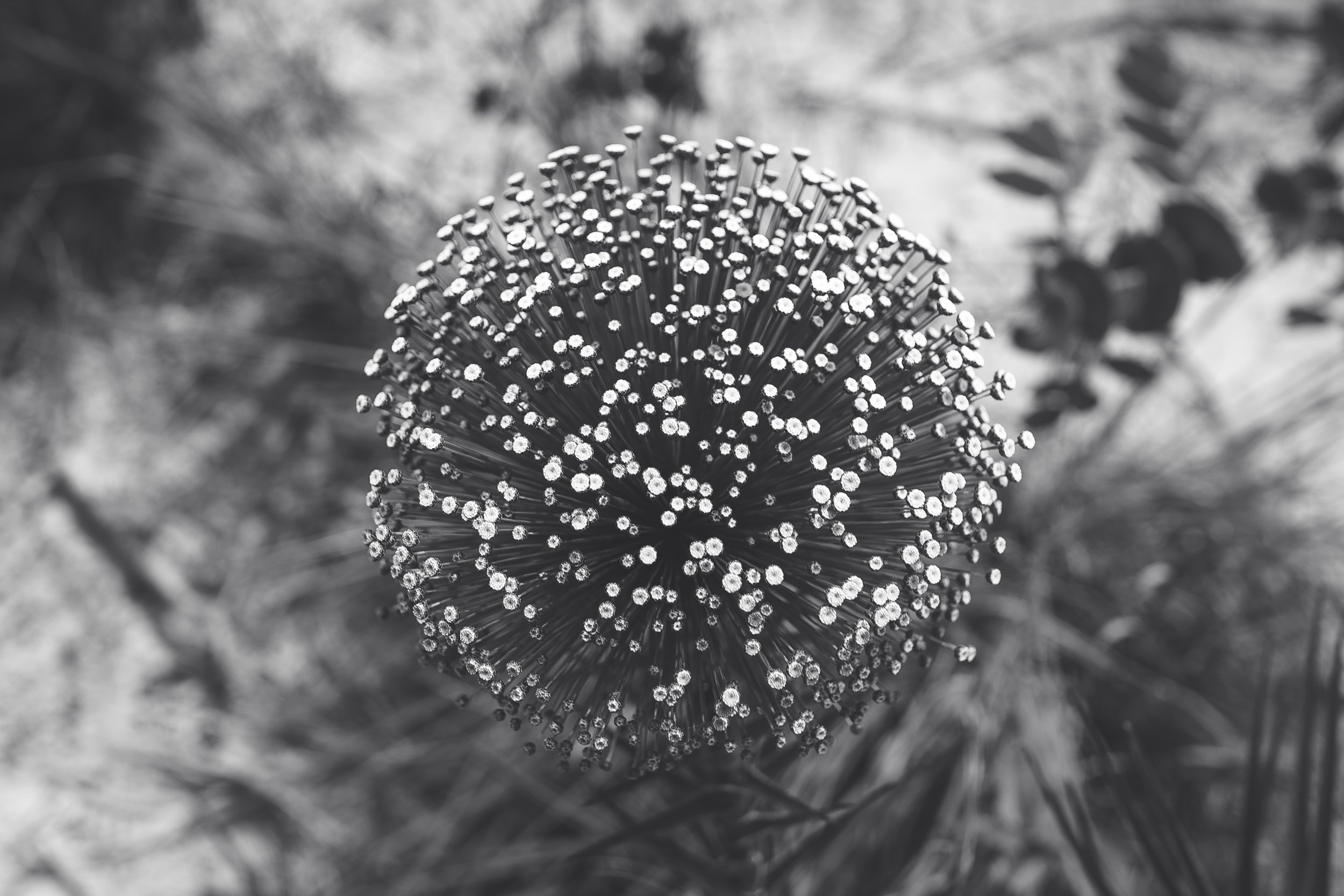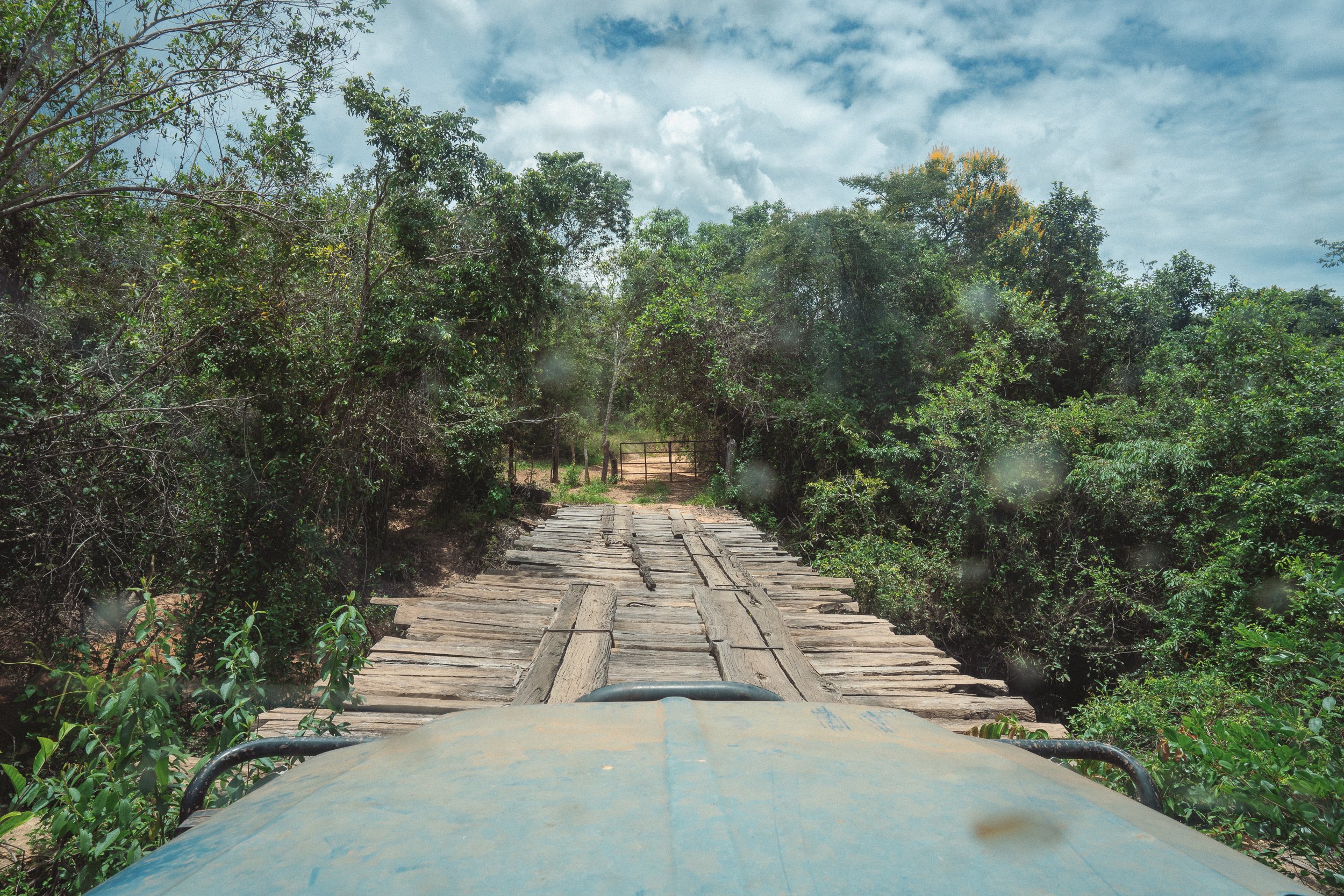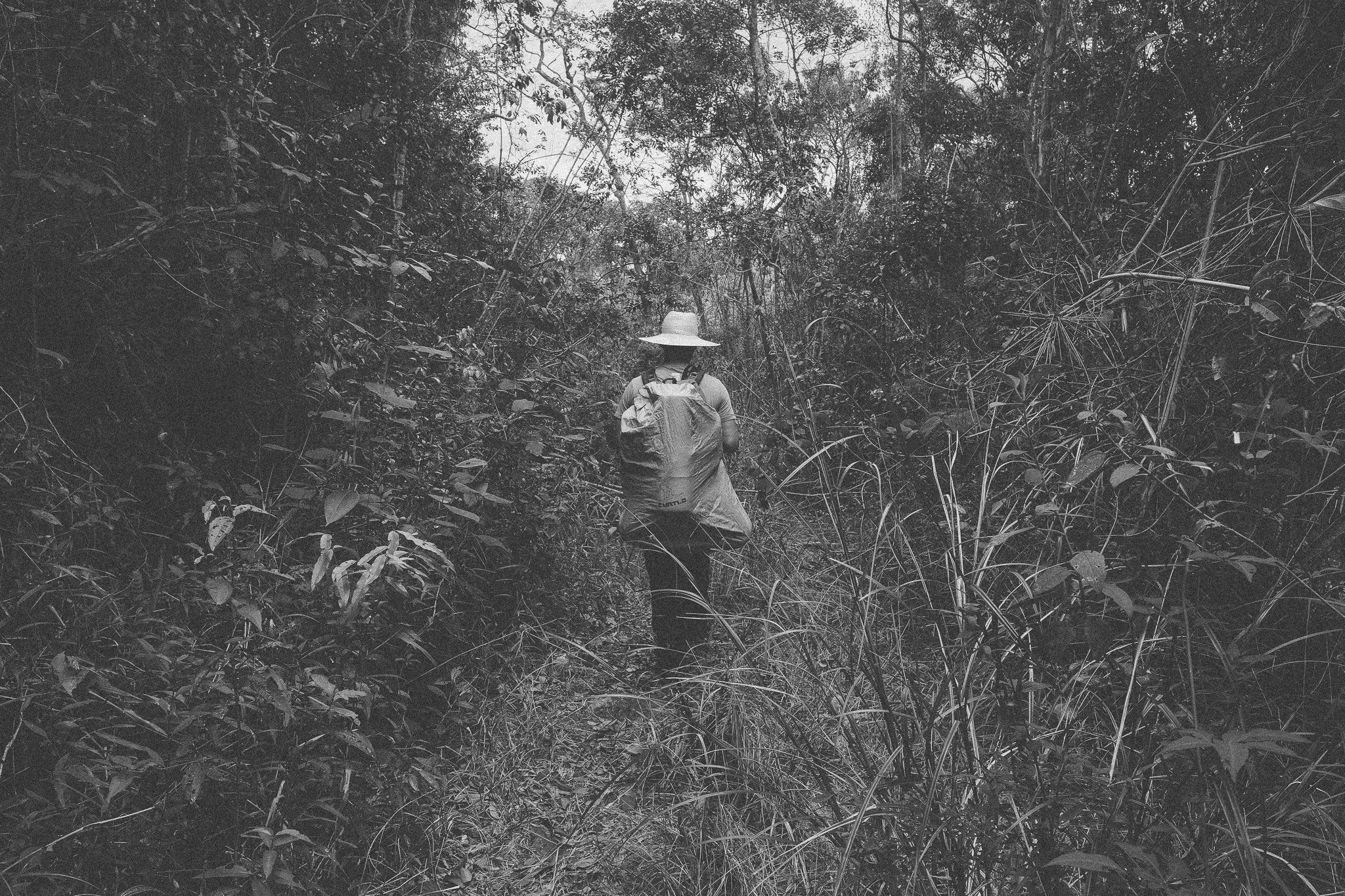
The Garden
Trekking, Riding & overlanding in Sempre Vivas National Park
The Garden: The Secret Circuit
Big cats, sharp plants, and (very) overgrown trails. Lost-world waterfalls & nameless peaks. Disputed lands. Forsaken ranches. Tree-sized flowers. And some of the most pristine high savannah landscapes on Earth.
Sempre Vivas National Park is as daunting as it is spectacular—and it is spectacular. Everything tends to be more epic within its borders due to both the untamed nature around us and the (necessary) heightened sense of awareness that accompanies that reality. If you’re looking for a true wilderness experience in the Cerrado—and enjoy a little old-fashioned bushwhacking with your trekking (or riding, or off-roading)—this is the region. Few places manage to feel this wild, this overlooked, and this magical.
We call our circuit in Sempre Vivas “The Garden” due to the presence of striking, robust flora (including the Eriocaulaceae family of plants from which the Park derives its name). It is, in our minds, a place for adventurous outdoorspersons wanting to experience the Cerrado at its most pristine; a riveting, unpopulated stretch of high savannah that offers a multitude of climactic, unforgettable 2- to 3-day crossings during longer explorations of the region, but is also uniquely suited for riveting multi-week total escapes from society.
For all but the heartiest of adventurers, we recommend it primarily as an extension of our other Circuits. While it borders all other Circuits, it requires a unique set of logistics, a different type of preparation, and a different mindset.
At a Glance
-
Sempre Vivas is a unique conservation unit, best suited for hearty, adventurous travelers. There are few opportunities for cultural interactions within the Park’s borders, and few specific natural attractions. Rather, it is an opportunity to experience the wilderness, and to witness the Brazilian high savannah in its most pristine state.
Trekking is our default way of travel in the Park, but overlanding (really, off-roading in this case) is a possibility as well, especially during shorter “mixed” (overlanding + hiking or trekking) jaunts into the central regions of the Park.
Trail riding and/or pack trips along the high campos (fields) and winding river valleys in the southwestern & western extensions is another incredible experience, although it can be challenging for inexperienced riders (these stretches can also be trekked & supported by pack mules).
As a Circuit, the Garden stands out for its remoteness, its unbridled wilderness (which requires an objectively different mindset than other Circuits), and its lack of specific natural attractions. It makes for a fascinating contrast with the friendly, water attraction-blessed Sertão (which it borders to the east), as well as the open views & mountain hamlets of the Serra (which it borders to the west). It provides a seamless transition to the Berço (to the south), whose residents remain intimately connected with the Park via flower-picking.
While we have done multi-week trips entirely within Sempre Vivas National Park, we believe it is best experienced as an extension—either as a crossing (or a series of crossings) between other Circuits during longer treks in the region, or a 1-3 day exploration by foot and 4×4. Crossings can take as little as 2 days or as long as 5-6 days, depending on your goals and remaining itinerary.
-
Everything tends to be more epic in Sempre Vivas because of the wilderness around us and the (necessary) heightened sense of awareness that accompanies that reality.
Expect overgrown, untrodden trails; tall grass; little-visited waterfalls; nameless peaks; exhilarating backroads; stunning fields of Cerrado wildflowers; camp grub (or tropeiro-style meals cooked on open fires, should the occasion call for it); wild camping in rock shelters; plenty of animal tracks; a healthy amount of isolation; and the most pristine cerrado found anywhere in the Serra do Espinhaço Meridional.
-
Sempre Vivas National Park
-
Cerrado (Brazilian Savannah), with small pockets of Mata Atlântica (Atlantic Rainforest)
-
Our guiding season typically runs from April 1 - October 30, although we’re happy to discuss the possibility of guiding certain Bespoke itineraries outside of those months, as well.
The daily storms in the Serra do Espinhaço typically taper off in March, making April & May two of the most beautiful months to explore the region by any means: gushing waterfalls, exuberant vegetation, plentiful springs, and crossable rivers.
June & July are mild & dry, with near-perfect trail conditions: warm, sunny days and crisp, cool mountain weather in the evenings, with hardly a cloud in the sky. This is prime season for extended treks & rides.
The dry season reaches its zenith in August & September, making them wonderful months for exploring the region by foot & horseback: the savannah landscape is parched, dotted by colorful bouquets of flowers & cactus fruit, with gently-flowing waterfalls & easily crossable rivers.
The long dry season finally breaks in late September, making October & November unpredictable, but beautiful: the Cerrado is in full bloom, with daily storms creating wet & wild trail conditions and turning the landscape a thousand shades of green. These are great months for overland tours, and for trips that mix & match shorter treks with drives & rides.

Trail Conditions (November )
Highlight: Exploring Sempre Vivas National Park
There’s a saying among garimpeiros in the Espinhaço that “all stones look like diamonds, but diamonds don’t look like any other stone”. The same might be said about Sempre Vivas National Park, a vast expanse of pristine high-altitude savannah that certainly doesn’t feel like any other stretch of Cerrado in the region.
Spanning 1,241 km2 (roughly the size of Los Angeles), with just a handful of full-time inhabitants (3, by our last count), thousands of endemic species, and no tourist infrastructure to speak of, the Park is the deep outback of a region (the Serra do Espinhaço) that could itself justifiably be described as the outback.
For the right (hearty) traveler, it is an absolute privilege to spend full, long days trekking, canoeing, and bushwhacking across its expanse, from the lush veredas of its eastern border to the wind-swept campos of the west, taking refuge in art-adorned rock shelters, dilapidated flower-picker shacks, and hauntingly isolated ranches along the way. We should warn you now: razor-sharp grasses, dust speck-sized ticks, snakes (including several deadly species), and lack of shade are harsh realities of the trail here—as are large felines.
Untamed, controversial (it’s a long story), and spectacular, the Park remains a true undiscovered gem—it’s genuinely shocking how few visitors from Brazil & abroad make their way here. Don’t expect to see anyone else.

LEvi’s House, TAquaral
Highlight: TAquaral
No place embodies the deeply paradoxical existence of Sempre Vivas National Park better than the decadent main residence of Fazenda Arrenegado (literally, Forsaken Ranch). Cast away in one of the most inhospitable stretches of the Park, and camouflaged by the surrounding rocks & vegetation, “Taquaral” has become synonymous with the untamed wilderness, land disputes, and predatory fauna that the Park is known—or rather, unknown—for. Its lone inhabitant & caretaker during the past 2 decades, Sr. Levi, recently departed the ranch, but remains a living legend around these parts, and for good reason: if you find yourself here, we’ll be about an 8-hour bushwhack & trek away from the next closest human.
The ranch house (not pictured) could use a good cleaning, but we think it’s best appreciated in its natural state. If you’ve never bathed in a horse trough, now’s your chance.
Corral, Taquaral
Trail Lunch, Taquaral

Canoeing on the Inhacicão, Sempre Vivas National Park
Highlight: The Inhacicão
So much about Sempre Vivas is about the journey, the feeling, and the remoteness. It’s fitting, then, that even the journey to get there is spectacular. If we’re approaching from the west, this often means a long & winding drive along pot-holed dirt roads, followed by a gorgeous wetlands hike and a canoe ride up one of the Jequitinhonha River’s most pristine tributaries.
While there are technically multiple points of entry (and no official entrance) to the Park, none is more dramatic than the Inhacica Grande River, whose nutrient-rich waters & powder-sand shores comprise the Park’s wild eastern border. Here, amidst the rocks & palms, white sand & birdsong, even Diamantina (a measly—but brutal—3 hours away overland) feels a world away. And yet this is just the starting point for what is often one of the most epic stretch of any trip in the Espinhaço: a multi-day crossing of Sempre Vivas.
We like to pitch our tents on soft white sand, next to the fire, whenever we find ourselves in the area. There are few places where we’d rather be at any time.
Dawn on the Inhacicão (April)
Canoeing on the Inhacicào (March)
Confluence (January)
River-Bound (April)

Boquet, Sempre Vivas NAtional Park (April)
HIghlight: Flower-spotting
Eriocaulaceae, the family of flowering plants from which Sempre Vivas National Park derives its name, is as inextricably linked to the history, economy, and identity of the Serra do Espinhaço as the diamonds that sustained the region before it. Sixty of the estimated 100 species in existence have been documented within the Park’s borders—eight of which are found no place else on earth.
With enchanting shapes that range from tiny buttons & stars to tree-like stalks with giant globes, “flower-spotting” has a way of making even the most arduous days on the trail joyous. We dare you not to get excited each time we pass one up close.
Papaelanthus (April)
Wildflowers (October)
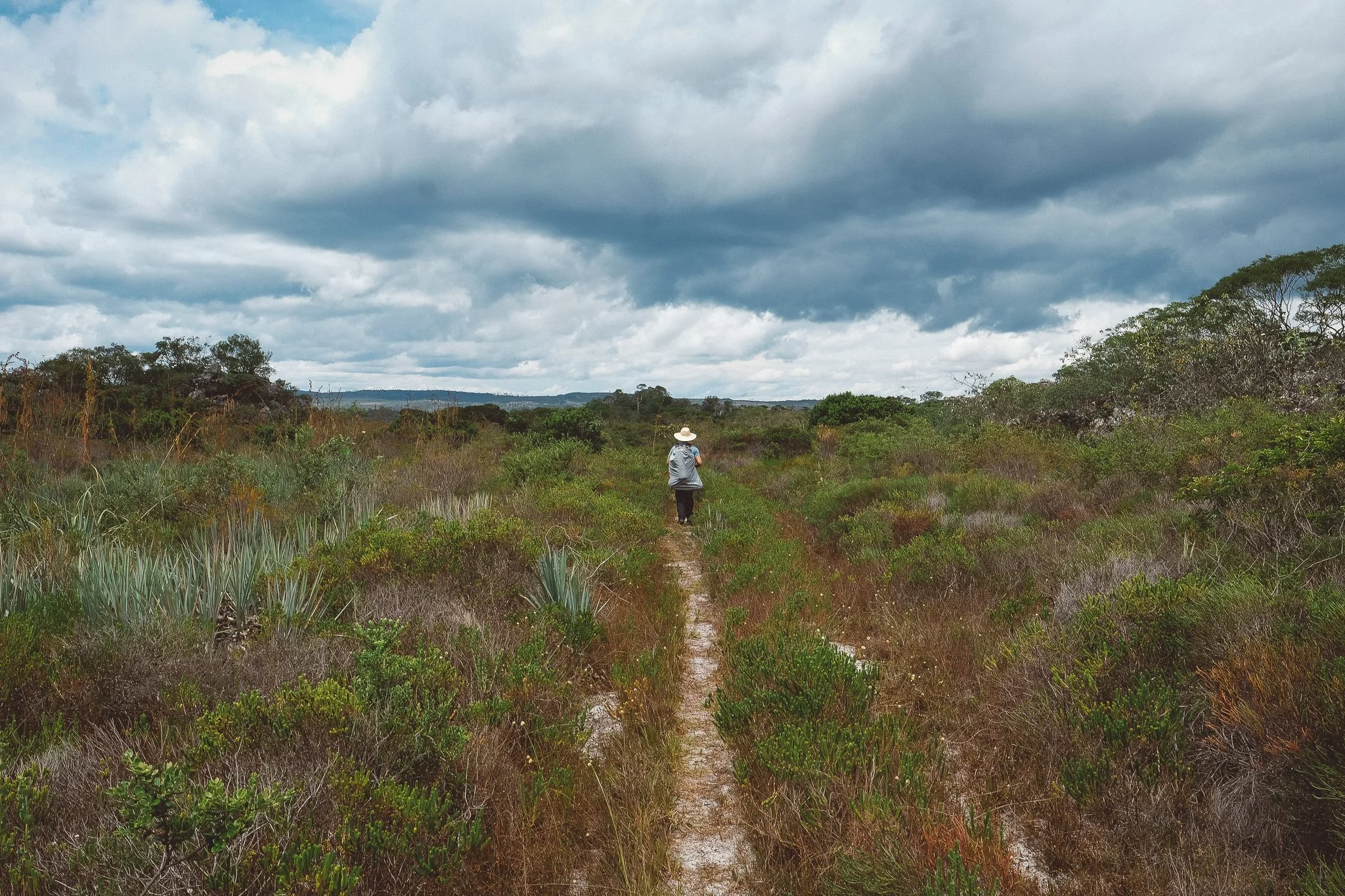
CAmpo (November)
Highlight: The Campos
There is something profoundly captivating about a place so controversial, so feared, and so remote being able to spring forth so much life with such ease. Yet this is precisely what the Park does, and its many glorious high campos (fields) are the epicenter of that activity.
Hidden between peaks atop a vast high plateau, and strewn with flowers & grasses of all heights & dimensions, the campos dominate the central regions of Sempre Vivas. Much of the Epinhaço’s water springs forth here, saturating the ground and creating marshes, streams, and tiny forest islands. Later, these waters will meet & cascade down the eastern & western escarpments of the plateau, nurturing a pair of Brazil’s most prolific rivers.
The campos are meditative to gaze upon—always a foreground, a middle ground, and a background—but a true delight to experience up close. As trekkers, there’s nothing quite like immersing in their depths, and in the possibilities of what we may see. Tapirs, deer, and giant anteaters roam freely (but are rarely seen by visitors); insects, birds, and amphibians abound; and (depending on the season) flower-pickers work the fields using traditional methods. Most of all, wilderness, timelessness & placelessness are omnipresent.
A lack of shade, snakes (including several species of viper, as well as rattlers, corals, and boas), bogs, head-high stalks, and prickly grasses make for arduous days, but the reward is worth it: a chance to experience one of the most pristine stretches of high savannah in Brazil.
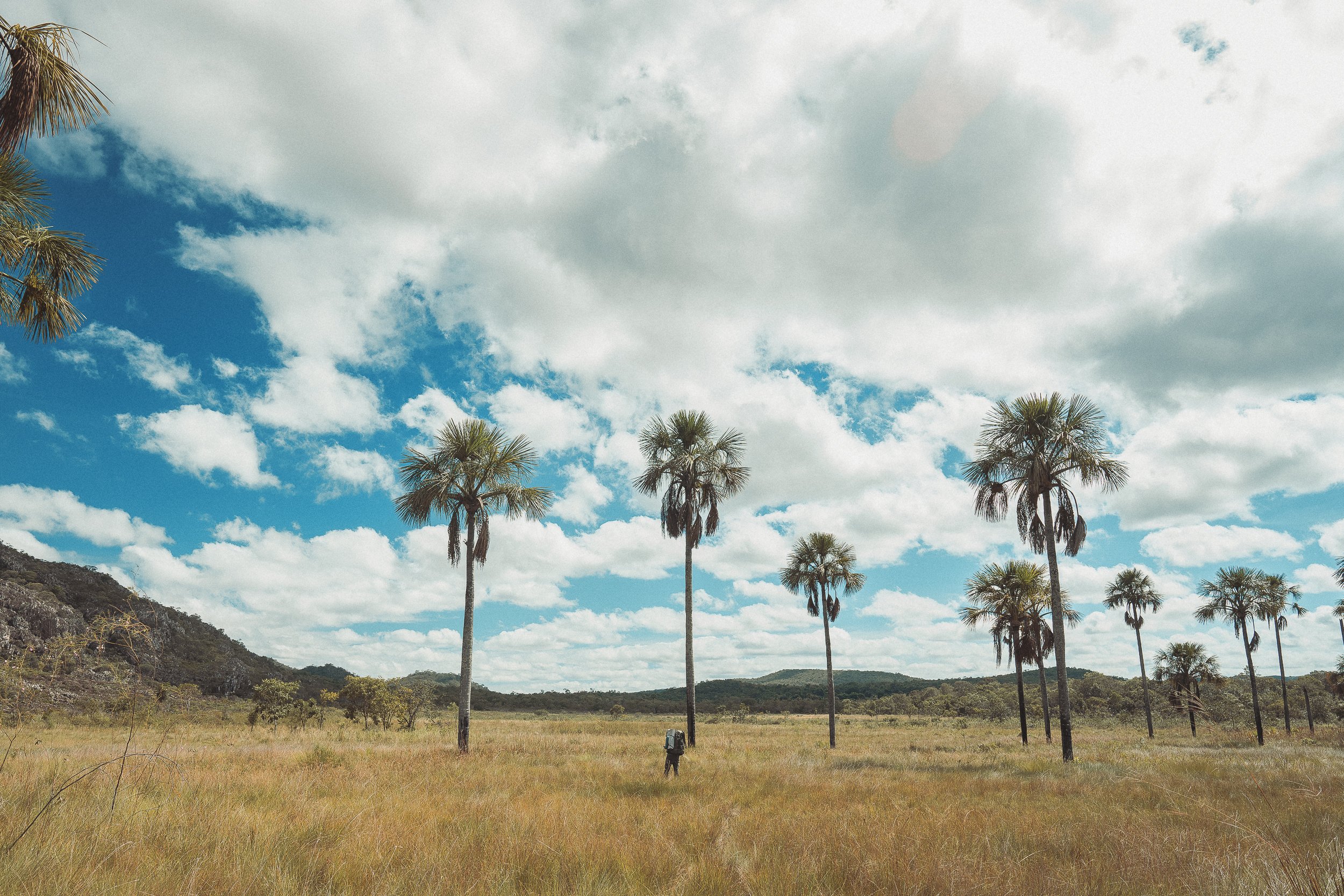
Vereda, Sempre Vivas National Park (April)
Highlight: Veredas
The word vereda translates literally to “way” in Portuguese, and to “stream” in certain parts of Brazil, but around these parts it’s used nearly exclusively in reference to a particularly verdant patch of cerrado—one in close proximity to a running body of water, with white sand, seasonal marshes, and expansive, gorgeous groves of the iconic buriti palm tree (Mauritia flexuosa, or moriche palm in English).
While veredas are fairly standard fare across much of the (relatively flat) Brazilian Midwest, they’re notably less prevalent in the Espinhaço, where the mountain backdrops make them a surreal sight to behold. Two distinct & thriving groves are found within Sempre Vivas’s borders: one seated upon the western escarpment of the Espinhaço, high above the dusty Sertão, and the other straddling the Inhacicão River in the eastern lowlands. Walking amongst these towering palms is always a feast for the senses.
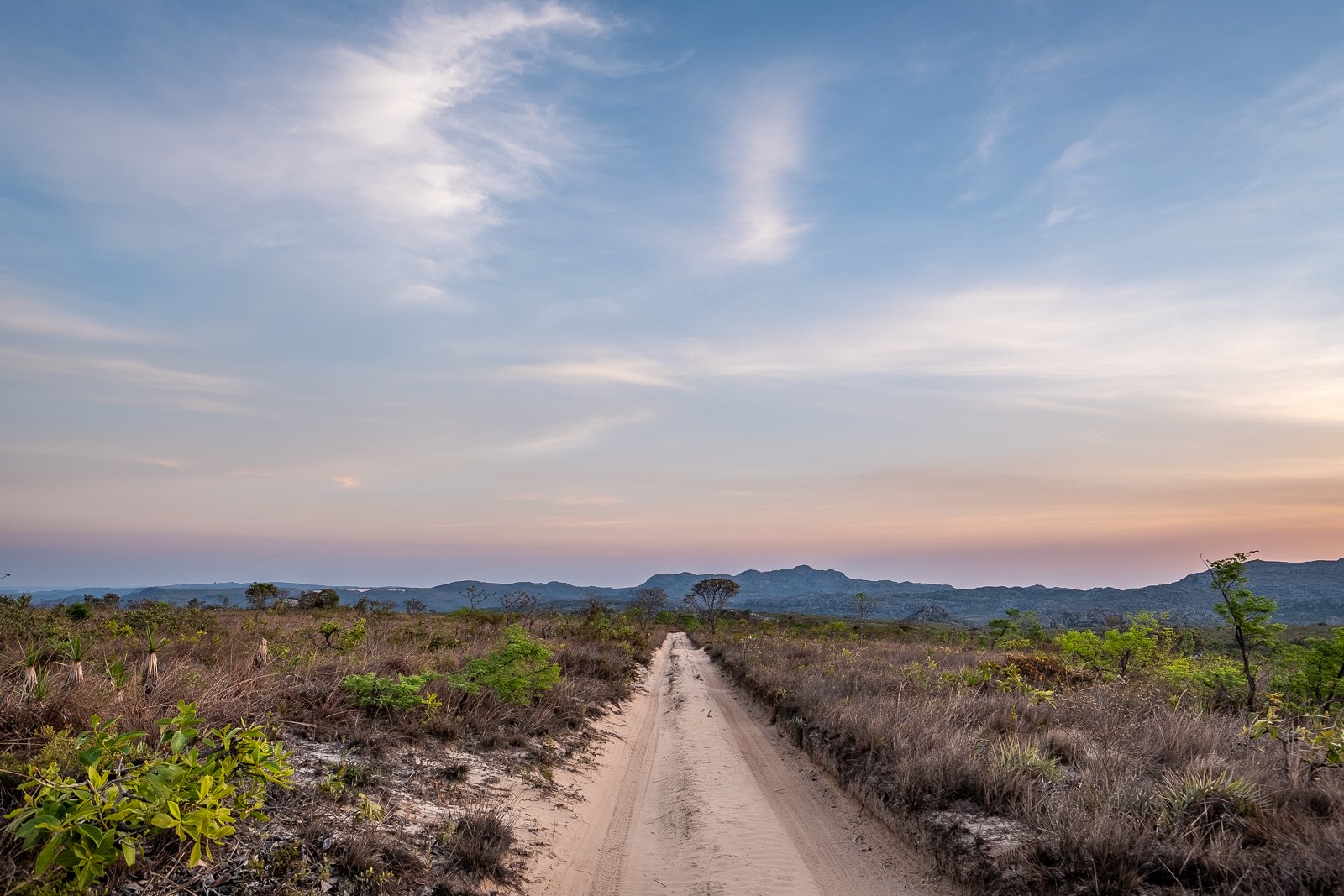
Park Road (August)
Highlight: Overlanding in Sempre Vivas NP
There is “off-roading”, and then there is navigating the surreal backroads of Sempre Vivas National Park, where jagged rocks, forest-shrouded mud pits, deep seasonal marshes, harrowing craters, and white sand trails are all just part of the commute.
Our vehicle of choice? The legendary Toyota Bandeirante (of course), a robust variant of Toyota’s beloved J40 series produced exclusively in Brazil from 1962 - 2001. As your captain speaking, we recommend you relax & enjoy the ride.
Road Conditions, November
Road Conditions, January
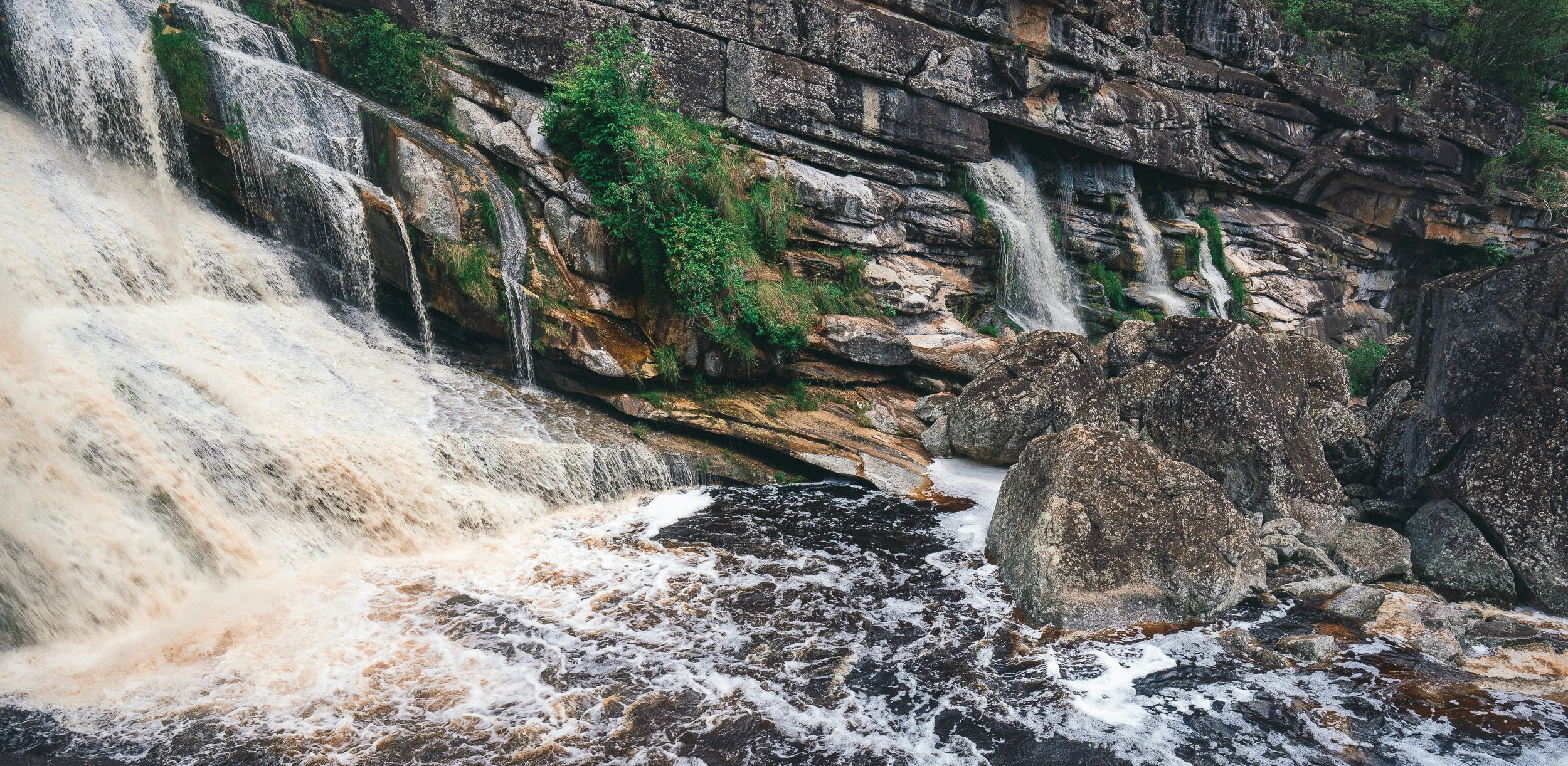
Cachoeira do Fundão (January)
Sempre Vivas: WAterfalls & Swimming Holes
Sempre Vivas isn’t where the water falls in the Espinhaço; its where its born. While the Park is literally surrounded by waterfalls (including some of the Espinhaço’s most beautiful & voluminous examples), and there are several nameless falls within the Park itself, the circuit is more defined by bogs, marshes, streams, tributaries, and pitch black swimming holes than picture-perfect cascades…
Water level (January)
Water Level (April)
Water level (August)

Backcountry CampSite, Inhacicão
Sempre Vivas: WHere We Sleep
In our minds, the most enriching accommodations are paradoxical in their offerings, providing us with both a safe haven from the strange world outside our door and an intimate glimpse into that very world. In Sempre Vivas, those accommodations include rock shelters (think: caves, but shallower), seasonal flower-picker shacks, abandoned ranches, and (of course) our tents.
If you’ve read this far, we think you’ll love it…
Wilderness Campsite, Fundão
Rock Shelter, Campos São Domingos
Abandoned Ranch, Taquaral
Lu’s Ranch, Vale do Rio Preto












